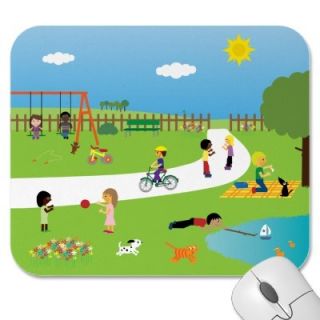Relationships
Virtual vs Real-World Relationships
Neighbors can be a valuable source of social support.
Posted October 15, 2012

It has been argued that neighborhood environments are becoming redundant as technology and mobility allow us to draw on broad social networks. I beg to differ.
As a mother of young children who works predominantly from home, I spend a lot of time in my neighborhood. Having only recently moved to the suburban fringe, I am yet to develop a strong local support system.
On those days I crave connection and adult conversation, I invariably find myself surfing the internet. While not an active participant, I’ve spent years observing the development of online communities through personal blogs and photo-sharing sites such as Flickr. I’ve often watched people reflect on the reasons behind their online presence. Time and time again, they comment on the support they receive from like-minded individuals and the accompanying sense of community. While these connections undoubtedly have a place in society, I question whether they are an adequate substitute for real-world relationships, particularly those between neighbors.
The close proximity of neighbors perpetuates unique opportunities for social interaction and support, such as providing surveillance of people’s homes, collecting mail, or watching children in emergencies. Both neighbors and neighborhoods are particularly important for less mobile residents such as people working from home, the elderly, parents of young children, and single car households.
For example, when my trip to the hospital was cut fine during the labor of my second child, it was a neighbor who cared for my toddler until family help arrived. When I sprained my ankle at a local park, it was a nearby friend who not only came to rescue us, but fed and showered my son until his father could collect him.
Social support is a strong predictor of mental health. Perceived emotional support has been shown to protect against stressful life events linked to depression, while social isolation has been associated with the risk of depression in later life. In addition, low levels of social support have been associated with higher mortality from almost every cause of death.
I still have a long way to go in building a local network. With my children’s three day-time naps to accommodate and a never-ending to-do list, making time to meet new people can be a logistical nightmare. And, let’s face it: making new friends can be daunting!
I have no doubt, however, that the effort required to make friends within my neighborhood will be far outweighed by the potential benefits. These efforts can range from spending time in the front garden and greeting passing neighbors to more involved activities such as organizing a street party.
In keeping with current research, most of my neighborhood friendships have arisen from activities that have involved my children. Parents’ groups, playgroups, schools and sporting teams are just some of the avenues through which people can make new acquaintances. Options that don’t necessarily involve children include local gyms, community centers, Resident Associations and community gardens.
I’m even spending more time walking within my neighborhood. While exercise is my main motivation, passive, face-to-face contacts of repeated and increasing length have been said to be a basis for developing friendships. Studies have also shown that walking within the neighborhood encourages social interaction.
The internet is a marvelous tool for connecting us with people we would normally never meet. In many ways, social media allows us to maintain friendships easier than ever. However, I do wonder if time spent maintaining online friendships is at the expense of our real-life interactions, which may have more to offer in terms of practical, if not emotional, support. I hope you will consider the real and potential friendships that may be just beyond your doorstep.
As is often the case, those things which have the potential to add value to our lives, also have the potential to detract. In my next post I will discuss some of the negative consequences of knowing our neighbors.
References
Francis, J., Giles-Corti, B., Wood, L., Knuiman, M. 2012. Creating sense of community: The role of public space, Journal of Environmental Psychology, vol. 32, pp. 401-409.
Berkman, L. F., Glass, T., Brissette, I. and Seeman, T. E. 2000. From social integration to health: Durkheim in the new millennium, Social Science & Medicine, vol. 51, pp. 843-857.
Gallicchio, L., Hoffman, S. C. and Helzlsouer, K. J. 2007. The relationship between gender, social support, and health-related quality of life in a community-based study in Washington County, Maryland, Quality of Life Research, vol. 16, no. 5, pp. 777-786.
WHO. 2003. Social Determinants of Health: The solid facts. R. Wilkinson and M. Marmot. Denmark, World Health Organisation.
Wood, L.J., Giles-Corti, B., Zubrick, S.R., Bulsara, M.K. 2012, “Through the kids … we connected with our community”: Children as catalysts of social capital, Environment and Behavior, xxx, pp.1-25.
Lund, H. 2003. Testing the claims of new urbanism: local access, pedestrian travel and neighboring behaviors, Journal of the American Planning Association, vol. 69, no. 4, pp. 414-429.




